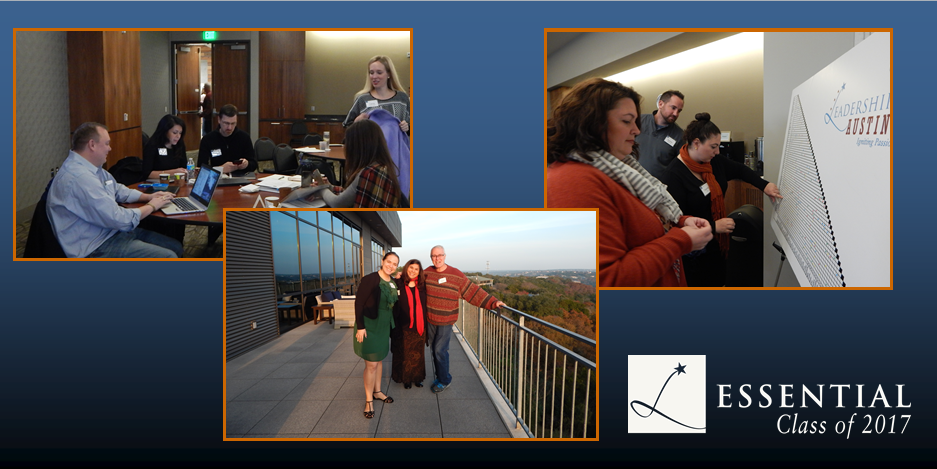
Guest post from Essential Class of 2017 participant Patricia Buchholtz, Partner/Marketing Strategist at lookthinkmake.
In the Army, when you want to make a team move through a narrow passageway more efficiently and effectively, you simply gather the Sergeants Major, let them know the exact time their team will move through the passageway, stagger the times so that the teams aren’t trying to go through at once, and voila – everyone gets through quickly and without any traffic jams.
As Joseph Kopser was relaying this anecdote during the Leadership Austin Essential December class, I wistfully thought, gosh, if only the entire City of Austin was run this way, we wouldn’t have traffic problems. And a follow up thought, gosh, if only we had a benevolent emperor, perhaps our city would be developed like Paris.
Snapping back to reality, the class continued to dive into Austin’s real estate issues, the twisted dance they do with traffic issues, and the blissful icing of the cake that makes us all have raging sugar headaches – affordability.
Here are a few key takeaways:
- If we want to preserve the land, reduce traffic, and become more affordable then we should build more densely. Because if you can put 200,000 homes in less than 2 square miles (downtown density), or 200,000 homes in 116 square miles (suburban density) – which costs less to maintain, uses less land, and is a shorter travel distance to a ton of jobs and things to do?
- Many developers are learners. They want to build a home that people will want to (and can afford to) live in. They are not the enemy, but they are constrained – they can’t do all things for all people. So collaborate instead of demonize. After all, if they don’t build the houses, we won’t have anywhere to live.
- Traffic can be innovatively dealt with – if we’re willing to accept innovation. Can we give up our personal vehicles and ride around a driverless car? Could we live where everyone took a cab, a bike, bus, train or walked? If we could, then we wouldn’t have a traffic problem (so they say).
And key action items:
- Say Yes to allowing driverless cars to be tested on public roads. The occasional, rare accident during testing and roll out is far less than the 4.4 million accidents and 38,000 deaths the U.S. had in 2015.
- Vote for density in our land use code. There are going to be growing pains, no matter what and forever, but density helps cities become sustainable instead of stretched thin and broke.
- Keep educating yourself and share your knowledge with others in a collaborative way. Don’t assume that city leaders, developers, transportation folks, or anyone, really, has all the answers. It takes continued knowledge reminders for everyone in order to make good choices.
While I don’t think I’ll be living in the likes of Paris anytime soon, at least I can be a part of how our city develops as we continue to grow rapidly in the years to come. Perhaps a fact-finding trip across the pond is in order?
NOTE: The opinions of Leadership Austin alumni, faculty members, and guest bloggers are their own, and do not represent an official position of the organization.


